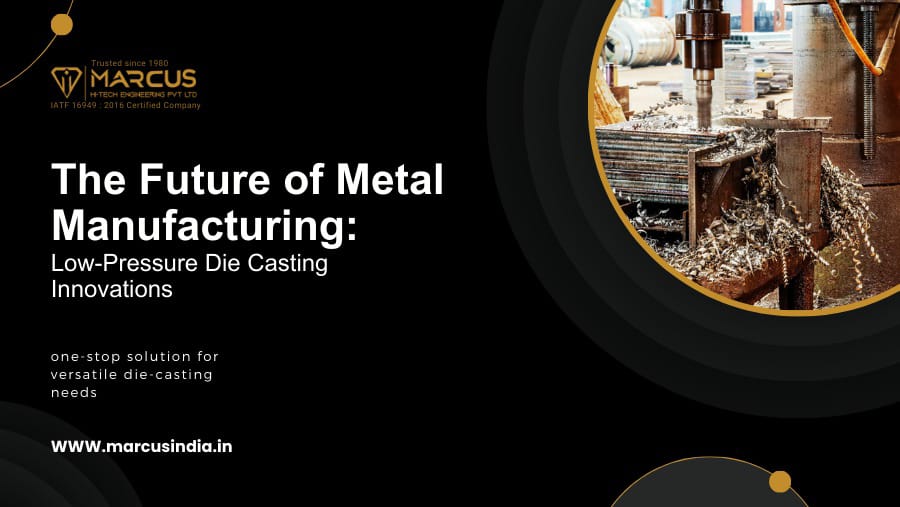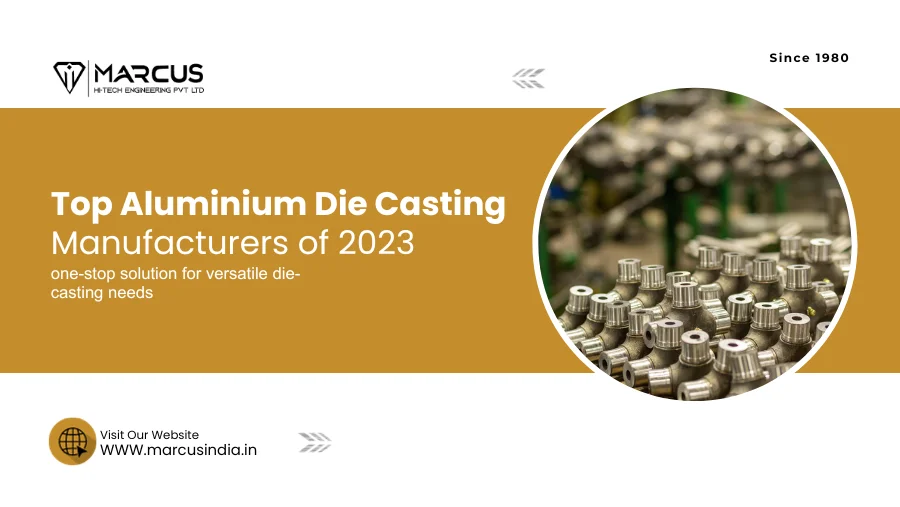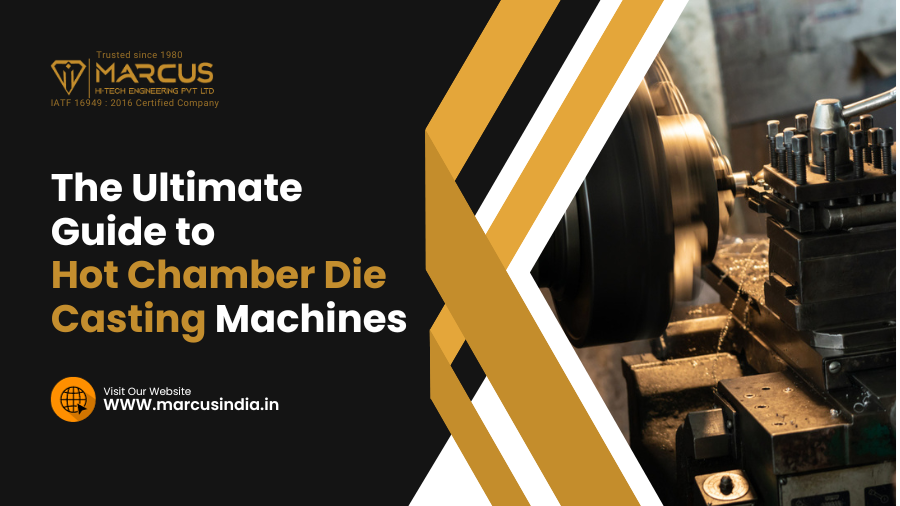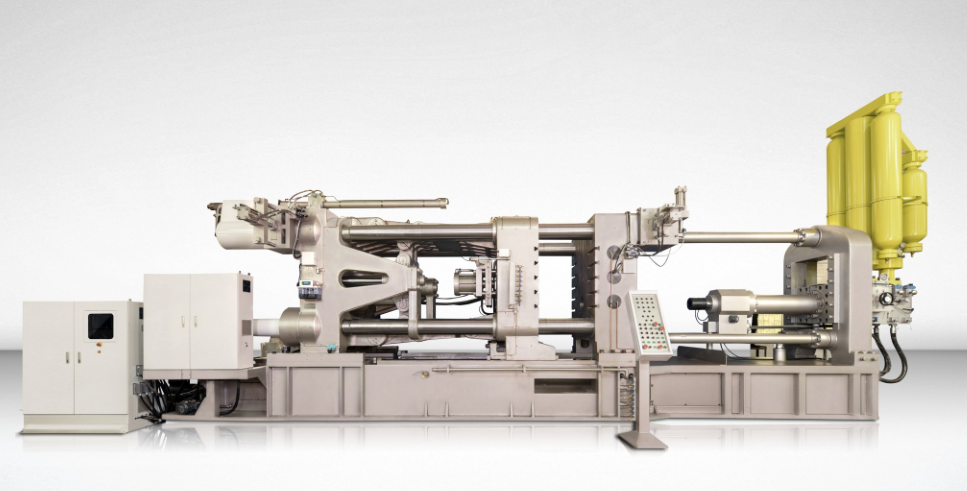
High-pressure die casting is a widely adopted and highly efficient metal casting process that accounts for approximately 50% of all global castings. According to reports, the Die Casting Market size is expected to grow from USD 77.99 billion in 2023 to USD 105.55 billion by 2028. This remarkable technique enables the manufacturing of intricate metal parts with exceptional dimensional accuracy and surface finish. From the automotive and aerospace industries to consumer electronics and renewable energy sectors, high-pressure die casting finds diverse applications.
This comprehensive guide will delve into the intricacies of the high-pressure die casting process, explore its equipment and materials, discuss its advantages and limitations, and highlight its broad applications. Whether you are a manufacturer, designer, or simply curious about the world of metal casting, this guide will provide invaluable insights into the fascinating world of high-pressure die casting.
Understanding High-Pressure Die Casting
High-pressure die casting, often called HPDC, is a metal casting process that involves injecting molten metal into a reusable steel mold, known as a die, under high pressure. The molten metal fills the mold cavity, solidifies rapidly, and is subsequently ejected as a solid part. This process primarily uses non-ferrous metals such as aluminum, magnesium, and zinc.
Process of High-Pressure Die Casting
High-pressure die casting (HPDC) is a precise and efficient metal casting process that produces complex and accurate components with excellent surface finish. In this section will delve deeper into the various stages of the high-pressure die casting process, from die preparation to part ejection.
Die Preparation
The first step in the high-pressure die casting process is die preparation. Made from high-quality tool steel, the die is meticulously designed and machined to accommodate the desired part geometry. The die design considers shrinkage, thermal conductivity, and venting.
Once the die is prepared, it is mounted onto a die casting machine, which securely clamps the two halves of the die together.
Molten Metal Injection
With the die in place, the next stage involves injecting molten metal into the die cavity under high pressure. The molten metal is typically sourced from a furnace, which is heated to its appropriate casting temperature.
The injection process begins with the plunger, driven by hydraulic pressure, forcing the molten metal into a shot sleeve. The shot sleeve acts as a conduit, guiding the molten metal toward the die cavity. A piston seals the shot sleeve to prevent metal leakage during the injection.
Once the molten metal fills the shot sleeve, the injection mechanism, driven by hydraulic pressure, rapidly pushes the plunger forward. This high pressure forces the molten metal into the die cavity through the gating system, ensuring it flows into all the intricate details of the mold.
Cooling and Solidification
Once the molten metal enters the die cavity, it begins to cool and solidify rapidly. The cooling process is facilitated by the cooling channels incorporated within the die, which allow the circulation of a cooling medium, such as water or oil, to extract heat from the metal.
The cooling time depends on various factors, including the part’s geometry, material composition, and the cooling channels’ efficiency. Rapid cooling helps achieve fine-grain structures and dimensional stability in the solidified part.
Ejection of the Part
After the molten metal has solidified and reached the desired strength, the die halves separate, and an ejection mechanism is activated to remove the solidified part from the die cavity. This mechanism may consist of ejector pins, plates, or other components designed to facilitate the smooth and efficient ejection of the part.
The ejected part is then collected and subjected to further post-processing steps such as trimming, deburring, machining, and surface finishing to achieve the desired final specifications and appearance.
It is worth noting that the high-pressure die casting process offers automation and process control opportunities. Automated systems can control the injection process, regulate the metal flow, monitor the temperature, and ensure consistent production of high-quality parts.
The process of high-pressure die casting showcases its efficiency, precision, and capability to produce intricate components with exceptional surface finish.
Advantages of High-Pressure Die Casting
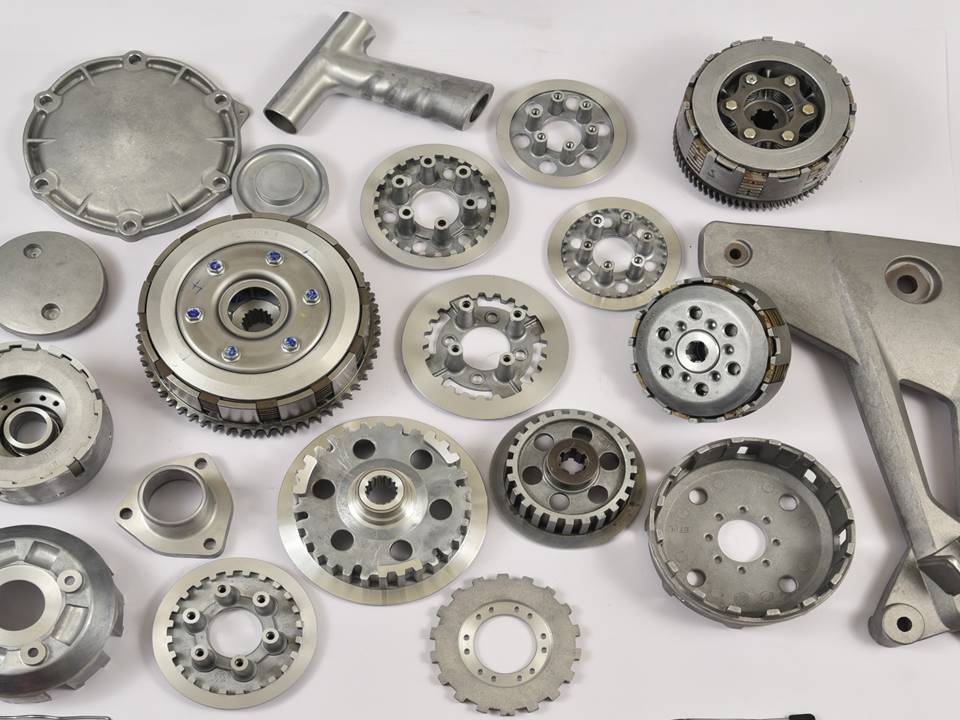
High-pressure die casting is widely used in manufacturing for its benefits in making metal components. Here are some of the significant advantages of high pressure die casting
Complex Geometries
One of the significant advantages of high-pressure die casting is its ability to produce complex part geometries with intricate details. The die-casting process allows for the creation of parts with thin walls, sharp corners, and intricate shapes that may be challenging to achieve using other manufacturing methods. This makes high-pressure die casting particularly suitable for industries such as automotive, aerospace, and consumer electronics, where intricate and lightweight components are in high demand.
High Production Rates
High-pressure die casting offers exceptional production efficiency, making it ideal for high-volume manufacturing. The process involves rapid cycle times, allowing for producing many parts in a relatively short time frame. This high production rate makes high-pressure die casting a cost-effective solution for industries that require large quantities of components, such as automotive and consumer goods manufacturers.
Excellent Surface Finish and Dimensional Accuracy
High-pressure die casting produces parts with excellent surface finish and dimensional accuracy straight out of the mold. The use of high-quality dies and precise injection process control results in parts with smooth surfaces, minimal surface defects, and tight dimensional tolerances. This reduces the need for additional post-processing or finishing operations, saving time and costs.
Material Variety
Manufacturers can use high-pressure die casting to work with various non-ferrous metals, such as aluminum, magnesium, and zinc alloys. This material flexibility allows them to select the most appropriate alloy for their specific application needs. Each alloy has distinct features, such as high durability, lightweight, resistance to corrosion, or thermal conductivity, which make it possible to produce components with superior performance qualities.
Cost Efficiency
Despite initial investment in tooling, high-pressure die casting offers long-term cost efficiency. Once the die is prepared, the production process becomes highly automated, reducing labor costs. The high production rates and minimal material waste also contributes to overall cost savings.
Design Flexibility
High-pressure die casting provides designers with great design flexibility. The process allows for integrating multiple features and functions into a single component, reducing the need for assembly and joining operations. Complex shapes and internal cavities can be easily achieved, enabling innovative designs and product differentiation.
Combining these advantages makes high-pressure die casting a popular choice for industries.
Industry-Wide Applications of High-Pressure Die Casting
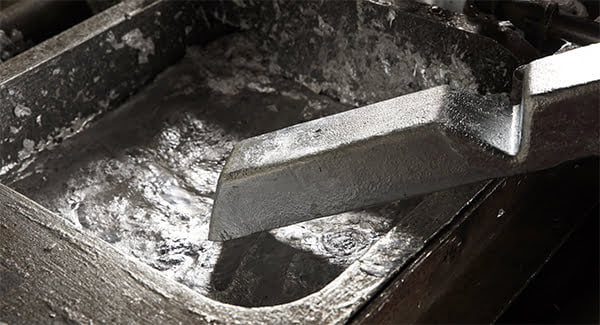
High-pressure die casting (HPDC) is a versatile manufacturing process with extensive applications across various industries. This section will explore some of the critical sectors where high-pressure die casting is utilized, highlighting the range of components produced and the benefits it offers to each industry.
Automotive Industry
The automotive industry is one of the significant beneficiaries of high-pressure die casting. The process is employed to manufacture a wide range of automotive components, including engine blocks, cylinder heads, transmission housings, intake manifolds, and suspension components. High-pressure die casting enables the production of lightweight, high-strength parts that contribute to improved fuel efficiency, performance, and durability of vehicles.
Aerospace Industry
The aerospace industry relies on high-pressure die casting to produce critical components used in aircraft and spacecraft. Engine parts, such as turbine blades, compressor housings, and heat exchangers, are commonly manufactured using high-pressure die casting. The process offers the advantage of producing intricate and lightweight components with high structural integrity, essential for meeting the stringent requirements of the aerospace industry.
Consumer Electronics
High-pressure die casting is a crucial aspect of manufacturing components for consumer electronics. Frames, housings, heat sinks, and connectors in mobile phones, laptops, cameras, and other electronic devices often use high-pressure die cast parts. This process is ideal for creating complex, lightweight, and visually appealing components that meet the stringent design requirements of the consumer electronics industry.
Home Appliances
The home appliances sector benefits from high-pressure die casting to produce various components. Parts for washing machines, refrigerators, vacuum cleaners, and kitchen appliances, including handles, panels, brackets, and pump housings, are commonly manufactured using this process. High-pressure die casting produces cost-effective, precise, and durable parts that meet home appliances’ performance and functional requirements.
Renewable Energy Sector
The renewable energy sector has adopted high-pressure die casting to manufacture various components in wind turbines, solar panels, and renewable energy systems. Gearbox housings, generator casings, frames, and mounting brackets are examples of parts produced through high-pressure die casting. This manufacturing process enables the creation of lightweight, durable components that enhance the efficiency and dependability of renewable energy systems.
Other Industries
In addition to the sectors mentioned above, high-pressure die casting finds applications in a wide range of industries. These include telecommunications, medical devices, lighting, industrial equipment, and many others. Components such as heat sinks, connectors, lighting fixtures, and machine parts are produced using high-pressure die casting, benefiting from the process’s ability to create intricate shapes, high precision, and excellent surface finish.
The versatility of high-pressure die casting enables it to fulfill the diverse needs of different industries. The process’s ability to produce complex, lightweight, and high-quality components has made it a preferred choice in manufacturing.
Materials Used for High-Pressure Die Casting
High-pressure die casting (HPDC) utilizes various materials to produce intricate and precise metal parts. The choice of material is influenced by factors such as mechanical properties, cost, weight, corrosion resistance, and the application’s specific requirements. Let’s explore the commonly used materials in high-pressure die casting:
- Aluminum Alloys: Aluminum alloys are the most widely used materials in high-pressure die casting. They offer excellent strength-to-weight ratios, good corrosion resistance, and high thermal conductivity. Aluminum alloys also exhibit good machinability and can be easily recycled. Popular aluminum alloys for HPDC include A380, A383, A360, and ADC12. These alloys are commonly used in automotive components, such as engine blocks, transmission housings, and structural parts.
- Zinc Alloys: Zinc alloys are another common choice for high-pressure die casting due to their low melting point and excellent casting fluidity. They offer a superior surface finish and can achieve intricate details, making them suitable for decorative applications. Zinc alloys also possess good dimensional stability and corrosion resistance. Popular zinc alloys for HPDC include Zamak 3, Zamak 5, and ZA-8. They find applications in products like electrical connectors, hardware fittings, and decorative components.
- Magnesium Alloys: Known for their low density, high strength-to-weight ratios, and good thermal conductivity. These properties of Magnesium alloys make them ideal for lightweight applications, particularly in the automotive and aerospace industries. Magnesium alloys can be challenging to cast due to their high reactivity and susceptibility to oxidation. However, alloy compositions and process control advancements have improved magnesium alloys’ castability for high-pressure die casting.
- Copper Alloys: Copper alloys, including brass and bronze, are occasionally used in high-pressure die casting. They offer excellent electrical conductivity, thermal conductivity, and corrosion resistance. Copper alloys are often preferred for critical electrical or thermal conductivity applications such as electrical connectors, heat sinks, and cooling components.
- Other Alloys: Apart from the abovementioned materials, high-pressure die casting can also be performed with other alloys, such as lead, tin, and certain steel alloys. These alloys are typically chosen for specific applications that require unique properties, such as lead-acid battery components or specialized industrial parts.
Design Considerations for High-Pressure Die Casting
Effective design is crucial for successful high-pressure die casting (HPDC) outcomes. Designers must consider various factors to ensure optimal filling, solidification, and die ejection. Let’s explore some key design considerations:
Wall Thickness
Maintaining consistent and appropriate wall thickness is vital for successful high-pressure die casting. Thin walls can lead to defects like warping, distortion, and insufficient material flow, while thick walls can result in porosity and longer solidification times. Designers should use uniform wall thicknesses to promote material flow and ensure consistent casting quality.
Draft Angles
Draft angles are necessary to facilitate the removal of the part from the die after solidification. Typically, draft angles of 1-3 degrees per side are recommended. Adequate draft angles prevent part binding and reduce the risk of damage during ejection. The specific draft angle depends on the part geometry and the characteristics of the material being cast.
Fillets and Radii
Sharp corners and edges can lead to stress concentration and casting defects such as cracks and porosity. Incorporating fillets and radii in the design helps distribute stresses more evenly, improving part integrity. Larger fillet radii are preferred to minimize stress concentration and increase the overall strength of the casting.
Parting Lines and Tooling Design
Consideration should be given to the placement of parting lines in the die design. Optimally positioning the parting lines can reduce the complexity of the tooling and facilitate efficient casting production. Well-designed tooling also contributes to better part quality, dimensional accuracy and ease of part ejection.
Ribs and Bosses
Ribs provide additional rigidity to thin-walled sections and help prevent distortion or warping during the cooling and solidification process. Conversely, bosses allow for integrating fasteners or other components, reducing the need for additional post-processing. Properly designed ribs and bosses enhance the structural integrity and functionality of the casting.
Gating and Runners
The placement and design of gates and runners significantly impact the flow of molten metal into the die cavity. Proper gating ensures uniform filling and minimizes the formation of air pockets and defects. Multiple gates or runners can help maintain consistent metal flow and reduce the risk of turbulence or porosity.
Undercuts and Core Pulls
High-pressure die casting must be better suited for parts with complex undercuts or features requiring core pulls. These features can complicate the ejection process and lead to increased costs and longer cycle times. Simplifying the design by avoiding intricate undercuts and core pulls improves the feasibility and efficiency of the die casting process.
Surface Finish and Texture
The final casting’s desired surface finish and texture should be considered during the design phase. Certain textures or finishes may require specific tooling modifications or additional post-processing steps. Communicating the desired surface finish requirements to the die caster ensures that the appropriate measures are taken during the casting process.
By incorporating these design considerations into the high-pressure die casting process, manufacturers can optimize the production of high-quality castings with minimal defects. Collaboration between designers, toolmakers, and die-casting experts is crucial to achieving the desired part functionality, dimensional accuracy, and overall manufacturing efficiency.
Challenges and Limitations of High-Pressure Die Casting
While high-pressure die casting (HPDC) offers numerous advantages, it also faces specific challenges and limitations that designers and manufacturers must address to ensure successful outcomes. Understanding and overcoming these challenges is essential for maximizing the benefits of the process. Let’s explore some of the key challenges and limitations associated with high-pressure die casting:
- Material Selection: Not all materials are suitable for high-pressure die casting. Some alloys may need better castability, leading to defects like porosity, shrinkage, or hot cracking. The choice of material must consider factors such as fluidity, solidification characteristics, and mechanical properties to achieve the desired casting quality.
- The complexity of Part Geometry: High-pressure die casting is well-suited for producing parts with relatively simple geometries. Complex part designs with thin walls, intricate features, or undercuts can be challenging to cast accurately and may require additional tooling modifications or post-processing steps.
- Tooling Costs: The initial tooling costs for high-pressure die casting can be significant. The die tooling, typically made from steel, must be precisely designed and manufactured to withstand high pressure and temperature during the casting process. While tooling costs are spread over the production volume, they can be a barrier to small-batch production or prototyping.
- Porosity and Defects: Porosity is a common defect in high-pressure die casting. Trapped gases during the filling process can create voids in the casting, affecting its mechanical properties. Proper gating and venting design and optimized process parameters are necessary to minimize porosity and defects.
- Solidification and Cooling Rates: Rapid solidification in high-pressure die casting can lead to non-uniform cooling rates, resulting in internal stresses and distortion. Design modifications, such as adding cooling channels in the die or adjusting the gating system, can help control the cooling rates and reduce the risk of part distortion.
- Ejection and Part Removal: Removing the solidified part from the die can be challenging, especially for complex geometries or parts with undercuts. Ensuring proper draft angles and well-designed ejection systems are critical to facilitate smooth part removal without causing damage.
- Surface Finish: The surface finish of the casting may only sometimes meet specific requirements, especially for textured or polished surfaces. Additional post-processing steps, such as shot blasting or polishing, may be necessary to achieve the desired surface quality.
- Environmental Impact: The process can consume a considerable amount of energy and produce substantial waste in the form of scrap and excess metal. Implementing sustainable practices, recycling scrap material, and optimizing energy usage is essential for reducing the environmental impact of HPDC.
- Size and Weight Limitations: The size and weight of parts that can be cast using high-pressure die casting are limited by the capacity of the die casting machine. Large and heavy amounts may require alternative manufacturing methods, such as sand casting or investment casting.
Also Check: Key Factors to Consider When Selecting Die Casting Suppliers in India
Final Words
High-pressure die casting is a precise and versatile manufacturing method in various industries, including automotive and consumer goods. Understanding the process, materials, and design factors to produce high-quality products is essential. It’s expected to play a crucial role in the future of manufacturing.
FAQs
High Pressure Die Casting is a precision metal casting process used to produce intricate and complex metal components with excellent dimensional accuracy. This manufacturing technique is widely employed in the automotive, aerospace, electronics, and various other industries.
In this process, molten metal, typically aluminum or zinc-based alloys, is injected under high pressure into a steel mold, also known as a die. The die is specifically designed to form the desired shape of the final product. The application of high pressure ensures that the metal fills all the intricate details of the die, resulting in a finely detailed and precise finished product.
Several finishing options are available for die-cast parts, including painting, plating, anodizing, and powder coating. These finishing options can help improve the appearance and durability of the parts and provide additional protection against corrosion and wear.
Marcus has a comprehensive quality control system in place to ensure that all parts produced meet or exceed customer requirements. This includes rigorous testing and inspection throughout the production process and ongoing monitoring and evaluation of quality metrics.
Yes, Marcus can provide custom tooling for die-casting projects. The company has in-house tooling capabilities and can work with customers to design and manufacture custom molds and tooling to meet their specific needs.
Die Casting Process
The Die Casting Process is a widely used manufacturing method for producing precise and intricate metal components with consistent quality and dimensional accuracy. It involves forcing molten metal into a reusable steel mold, known as a die, under high pressure. The die is precisely designed to form the desired shape of the final product.
Here’s a step-by-step explanation of the die casting process:
Preparation: The process begins with the preparation of the die. The die is typically made from steel and consists of two halves: the fixed half and the ejector half. These halves are carefully machined to create the desired shape of the product.
Melting and Injection: The selected metal, usually aluminum, zinc, or magnesium-based alloys, is melted in a furnace at high temperatures. Once the metal reaches the required temperature, it is injected into the die cavity at high pressure using a special machine called a die casting machine.
Filling the Cavity: The high pressure ensures that the molten metal fills all the intricate details and cavities of the die, creating a precise replica of the die’s shape. This results in the formation of the component with the desired design and features.
Cooling and Solidification: After the die is filled, the molten metal is left to cool and solidify inside the die cavity. The cooling time depends on the size and thickness of the component. Rapid cooling techniques can be employed to enhance production efficiency.
Ejection: Once the metal has solidified and taken the shape of the die, the two halves of the die are separated, and the newly formed component is ejected from the die by using ejector pins.
Trimming and Finishing: After ejection, the component may undergo additional trimming and finishing processes to remove excess material, improve surface quality, and meet the specified tolerances.
Quality Control: The finished components undergo rigorous quality control checks to ensure they meet the required standards and specifications.
Advantages:
Excellent Dimensional Accuracy: High Pressure Die Casting allows for the production of intricate and complex metal components with high dimensional accuracy. This precision makes it ideal for manufacturing parts that require tight tolerances and consistent dimensions.
High Production Rates: The process is highly automated, enabling rapid production of large quantities of components in a short time. This high production rate makes it cost-effective for mass production applications.
Wide Range of Materials: High Pressure Die Casting can be used with a variety of materials, such as aluminum, zinc, magnesium, and copper-based alloys, providing flexibility in material selection for specific applications.
Smooth Surface Finish: The process yields components with smooth and fine surface finishes directly from the die, reducing the need for additional finishing operations.
Thin-Walled Structures: High Pressure Die Casting can create thin-walled structures with intricate designs, resulting in lightweight components without compromising strength and functionality.
Disadvantages:
High Initial Tooling Cost: Designing and manufacturing the dies used in the process can be expensive, particularly for complex components. The initial tooling cost may be a barrier for small-scale production or prototypes.
Limited Size Range: High Pressure Die Casting is more suitable for smaller to medium-sized components. Large parts may require alternative casting methods.
Porosity and Shrinkage: Some porosity and shrinkage may occur during the solidification process, which can affect the mechanical properties of the final product.
Design Limitations: The die casting process may impose certain design constraints due to the need for draft angles, uniform wall thickness, and the absence of undercuts.
Surface Defects: While the process typically produces smooth surfaces, certain defects like air pockets, flash, or surface blemishes may occur if not managed correctly.




